French PV system installer Sunbooster has developed a cooling technology for solar panels based on water. It claims its solution can ramp up the power generation of a PV installation by between 8% and 12% per year.
The solution consists of a set of pipes that can surround a rooftop PV system or ground-mounted plant. The pipes are used to spray a thin film of water onto the glass surface of the modules.
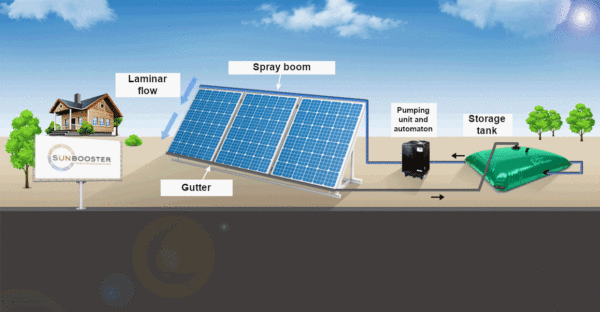
Image: Sunbooster
“The company had originally experimented with a water-vaporizing solution, but this produced thermal shocks for the PV system,” Sunbooster CEO Grégory Boutteau told pv magazine. “Furthermore, the drops produced by this cooling system had a negative impact on solar light absorption.”
Water flow
The company's solution is a patented pipe with a number of very small holes, so special installation skills are required. Stored rainwater is pushed into a ramp at the edge of the panels. Water then flows onto the surface of the modules and immediately lowers the temperature.
“The materials used to build the pipes have been chosen based on their quality, reliability and durability,” Boutteau said, without providing additional details about the patented technology. “Pipes are UV-resistant and drilled with holes – their number and size are defined by our design and engineering office in respect of our patents.”
The water only spreads across the glass surface of the panels and does not touch any plastic parts, such as the backsheets or other components. “It can be considered in the same way as rain, and for this reason it does not affect the warranty of the modules,” Boutteau said.
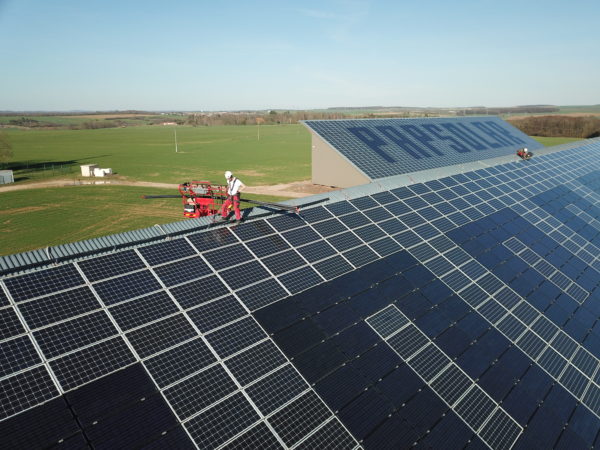
Image: Sunbooster
The system is set in motion by a temperature sensor which triggers the water spread when ambient temperatures exceed 25 C. Although the water may have some influence on the modules’ light absorption, this is fully compensated by the increase in power yield that can be achieved by preventing temperatures from surpassing 30 C, Boutteau said.
The cooling systems collect the water from a rainwater tank. And after the water is used, it can be recycled, filtered, and stored again. “Our Sunbooster solution works in closed circuit and doesn’t need additional water,” Boutteau explained.
Cost considerations
The technology, which can be applied to PV systems and solar plants built at all kinds of tilted angles, currently costs almost €250,000/MW. But Sunbooster expects to more than halve that to between €100,000/MW and €150,000/MW within the next two years.
“We are now developing new partnerships with big players,” said Boutteau. “And this, combined with the economies of scale of large ground-mounted projects, will help us reduce our costs significantly.”
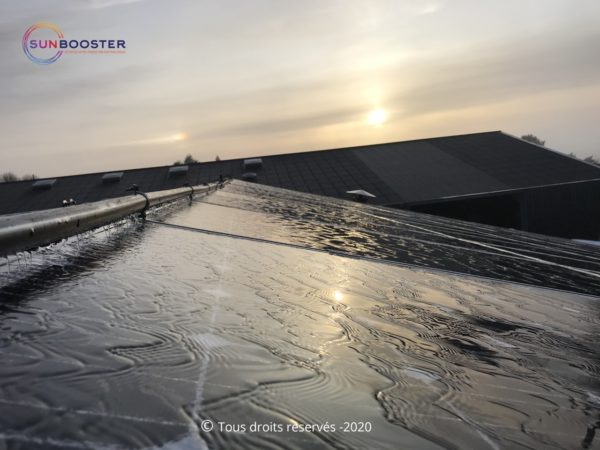
Image: Sunbooster
So far, the technology has only been adopted in projects backed by cost-offsetting incentives. However, the company claims that it has started to sharply lower the cost structure of its systems to support unsubsidized projects in the near future.
For a 10 MW PV plant, around 25 km in pipes would be needed, which complicates logistics and installation, Boutteau said. “But the system is easy to deploy with the necessary skills,” he added.
Sunbooster currently needs to send teams out to install its systems. However, the company plans to train partners who are capable of deploying its technologies at a global level, in line with its standards. “Our partners will be referenced in our network validated by an internal certificate delivered by Sunbooster,” Boutteau said.
He added that the adoption of a similar cooling system could increase the complexities of projects and the number of possible variables. “Installing our system in Spain or Germany is not exactly the same thing,” Boutteau stated. “Furthermore, there many other water-related factors that must be taken into account, such as water vaporization rates, humidity and available water resources.”
This content is protected by copyright and may not be reused. If you want to cooperate with us and would like to reuse some of our content, please contact: editors@pv-magazine.com.
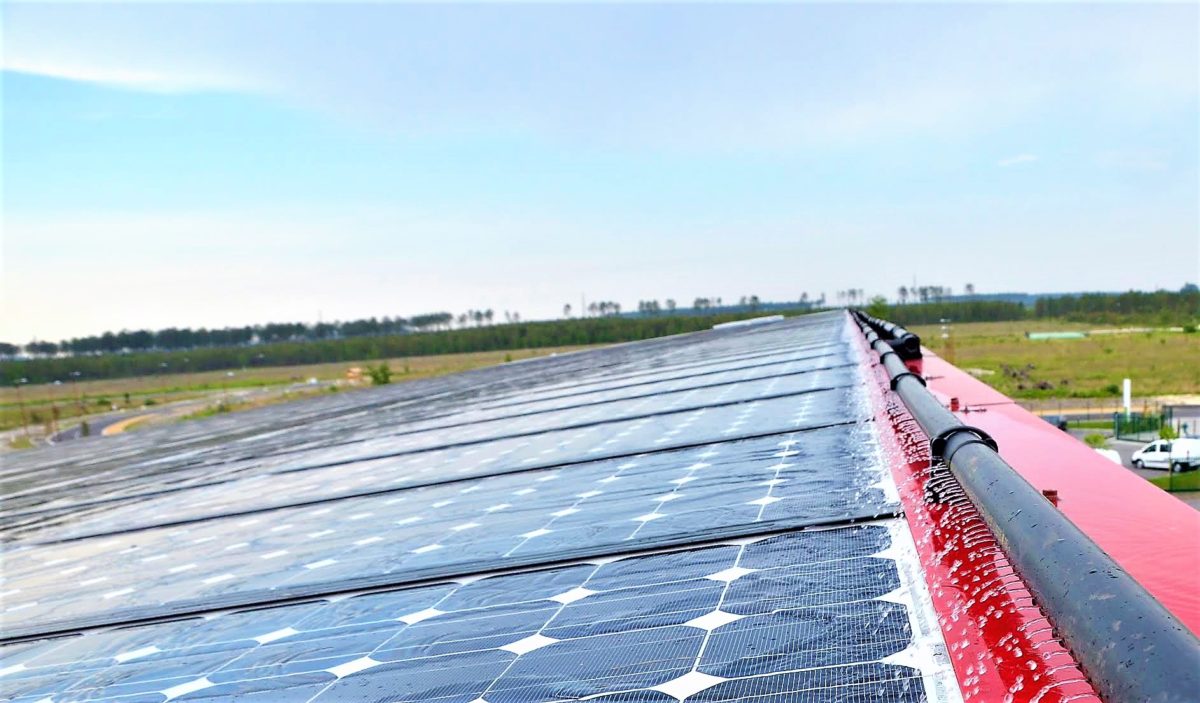
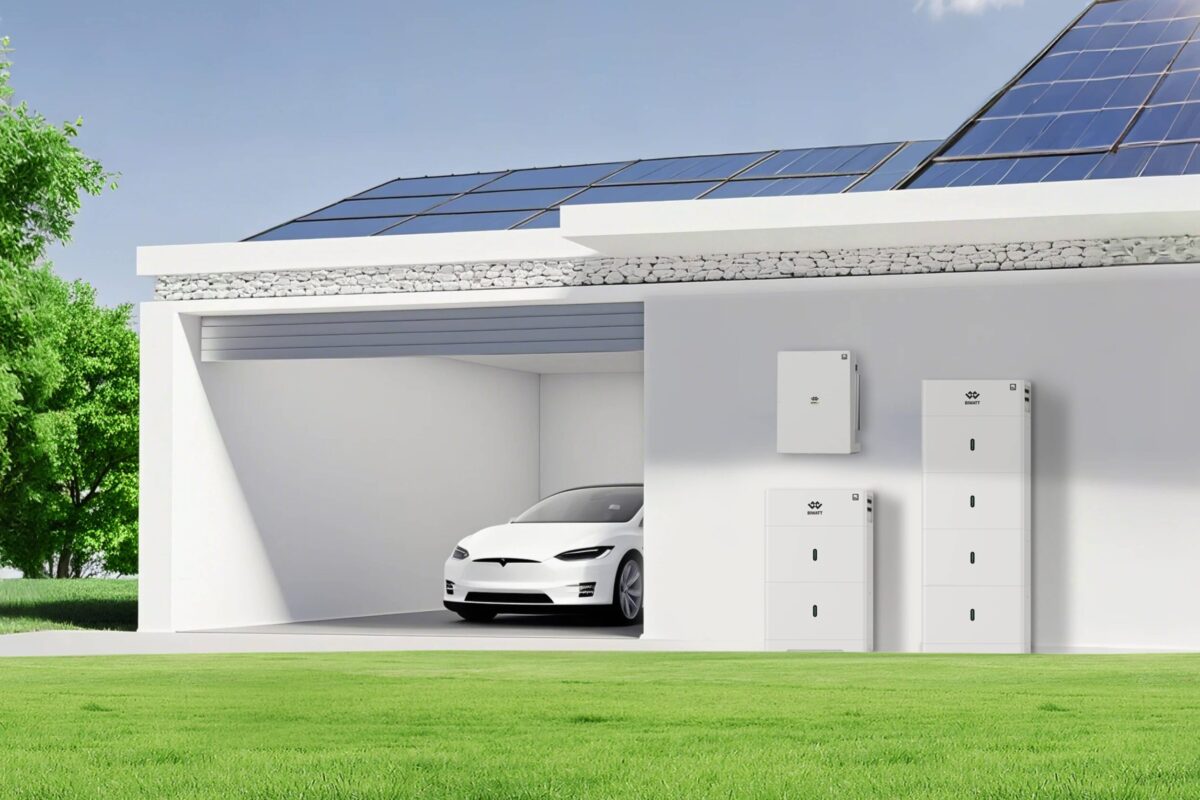


Not to mention freezing. Good idea!
algae growth on the solar panels?
I suppose there could be the added benefit of keeping the panels clean during low rain periods, such as summer, likely where part of the efficiency increase comes from.
Iot project with temperatures sensor to start spraying above 25°c .
My son did electronic project for his 7th std to spray water when temperatures sensor is activated by fire. Other was clap activated sensor.
But for precision an arduino or raspberry microprocessor TI or others will help to be accurate. Cheap too. Pipe part only may be costly . If possible it could be hidden if using drip irrigation type cheaper pipes.
Raspberry Pi W with a BME280 sensor and relay is quite inexpensive. Using it to run an evaporative cooler with more expensive BME680 for humidity sensing. Great educational opportunities. Pi W at Microcenter can be $5, currently $8.
Hi
Nice to see that people are trying to get more yield from PV system by designing such solutions. As you said the it will affect light emission to cells but it will offset by temperature reduction of modules, then whats the benefit of using that.. Rather it costs and definitely will also need to replace filters to have clean water for modules. Additional cost.. How much will be cost benefit ratio and will it be feasible for residential systems.
Thanks.
Iqbal
Good when I see this post
The quantity and speed of the cooling water must be defined and specified.
The variation of temperature with water flow rate must be defined.Also the variation of water speed with temperature must be specified.
Cooling effect is by evaporation, so additional water is definitely needed.
Hi Gordon, the cooling effect comes from water thermal bareer, avoiding panels to heat,
Great !
Cooling down pv panels with H2O.
Got some ideas to share to make this technology excellent…
Panels should be built in capillaries for water, which can draw heat from panels in exchange both panels will be cooler and more efficient and hot water also obtain, which can be used for for various uses
This sounds promising.
Not new. Did this on a PV/T system installed back in 2002 published 2004 ISEC’2004 ISEC2004-65180 and ASES July 11-14 2004 titled Optimization of Photovoltaic / Thermal Collectors. Did it on flexible laminated modules; glass can have thermal shock if very hot and pour cool water onto them. First showed dirt cleaning, and then cooling effects. Water will cause buildup on modules from non-pure water. We used reciprocating sprinkler at the apex of the array. Cooling effects in the plenum below array brought into the house for air conditioning.
“… cooling of the PV/ T system. Water was sprayed
on the collector at 3 PM, and then turned off at
4:30 PM. The graph shows the rapid cooling of
the PV/T, the attic, and the roof ambient air
temperatures. The PV electrical production rose
15% due to the washing of the modules and from
the cooling.”
Is it possible to cooling down the solar panel? …this was my first question but to see this,this is perfect.
This looks like vaporware. In the sample picture of the words spelled with different solar panels, where does water go when it reaches end of first or second panel? ??? On to ground or roof? C’mon.
It looks like they collect and reuse it using a gutter and pipe system. In some settings the warmed water could be used for residential or industrial use either directly or transferring the heat to a clean water supply. Even better, let it drip into a swimming pool to heat the water.
Could they pump water across them and use it to generate power as well? Maybe heat homes with the hot water?
That’s what a French company DualSun is doing
This looks like a maintenance, install, and total cost nightmare. It also doesn’t look like anything is going to be solid as far as R&D for the near future. I think I’d rather use a spray that’s being developed designed to reduce sun glare with a more effective result without having to install a roof eco system. It looks like an attempt at an offshoot of commercial systems for the rooftops of large commercial buildings that has been used in the U.S. for 15 years in AZ, TX, & FL. I can’t see it being even remotely cost effective for the “projected” outcome.